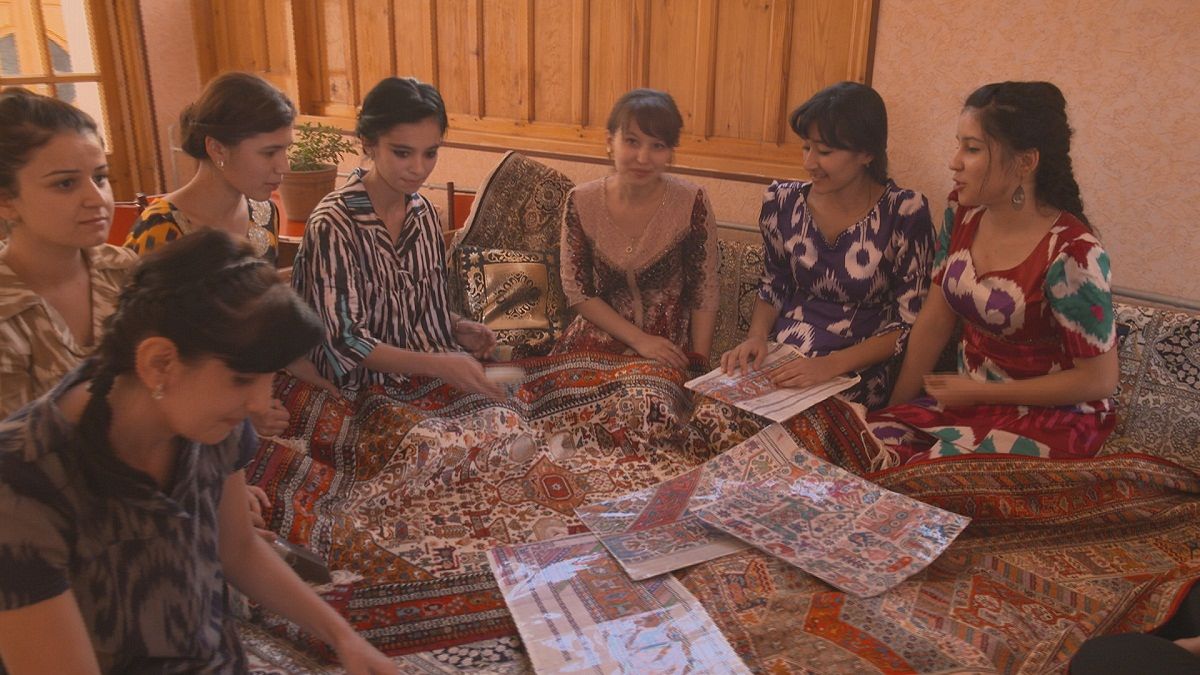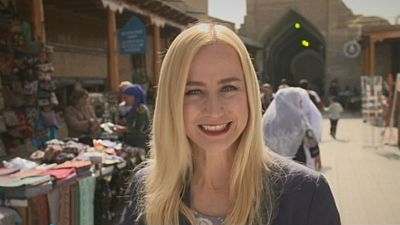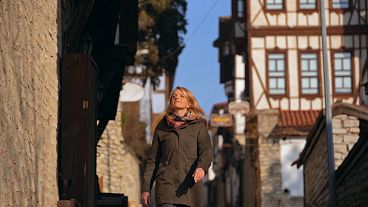Fascinating gold embroidery, colourful pottery and handmade carpets. In the old caravan city of Bukhara merchants still sell their goods today under
Fascinating gold embroidery, colourful pottery and handmade carpets. In the old caravan city of Bukhara merchants still sell their goods today under the ancient trading domes. In this edition of “Uzbekistan Life” we’ll discover the gems of the centuries old handicrafts.”
It’s busy at the master’s home: Umida Mukhamadiyeva and her colleagues are discussing their latest handmade carpets, weaving techniques and colours.
It’s a centuries old tradition that the women of the neighbourhood gather in the biggest house of the area to work together. They take great pride in the art of carpet weaving; an craft deeply rooted in the city’s history.
“These kind of carpets are part of our culture. If you enter the home of a Uzbek family you will see these carpets on the walls. We also have them on the floor,” explained Mukhamadiyeva.
Bukhara’s carpets are famous worldwide for their distinctive design and multi-coloured patterns. These colours come from natural dyes: the red from pomegranates, the yellow from onions or the brown from walnut peel.
“All the fibers we use are natural. We have a unique method of weaving and a design that makes our carpets different. We’re using a lot of motives of animals, tribal patterns and flowers,” she added.
The precious masterpieces are produced from silk, cotton or wool of a baby camel’s neck and it takes at least three months to complete a small rug.
At almost every corner of the bustling centre the artisans sell these carpets. The city is famous for its bazaars, caravanserais and trading domes.
Historian Ikhtiyor Kenjaev said: “Bukhara was located in one of the important locations in the centre of the Great Silk Road and from ancient times on the caravans and the big traders were passing through the city. Many kinds of different handicraft are still kept alive for example the ceramic works.”
One of the most famous craftsman of this region is Abdullo Narzullaev: “Ceramics are our family business, my father, my grandfather, my great-grandfather they were all ceramist. I’m in the sixth generation.”
The ceramic master of a pottery dynasty still uses the old techniques and only local materials, like the clay.
Pottery is highly popular in Uzbekistan and among the oldest crafts in the country.
“There are several centres of ceramics in Uzbekistan and each centre has its own style like different colours, different motives and different shapes. And the colours of the Bukhara area are green, brown and yellow,” said Narzullaev.
It takes no less than 24 steps to fabricate such wood-fired glazed earthenware pottery from start to finish. More than 60 different shapes and about 100 motives are used in the region of Bukhara.
But the city is also famous for another precious handicraft: gold embroidery. In ancient times the handicraft was reserved only for emirs and his courtiers.
Today dresses, caftans, shoes and even theatre curtains are decorated with the precious golden thread. Dilnoza Tosheva, 30, began learning the challenging needlework from an early age.
“I was taught this handicraft since I was little. That’s why it fascinates me, especially the shining of the gold. It inspires my soul,” said Tosheva.
In the next edition of “Uzbekistan Life” we’ll explore the more than 2,500 old city Termez, which boasts a unique archaeological treasure trove.



